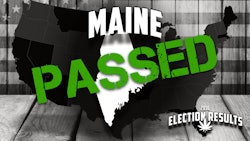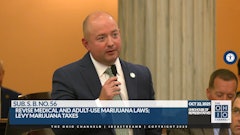
On September 29, 2016, Governor Jerry Brown signed into law Assembly Bill 2516, commonly referred to as the “Cottage Cannabis Farmers Bill.” The bill added the Type 1C license for small cannabis cultivation operations to the enumerated licenses in the Medical Cannabis Regulation and Safety Act (MCRSA).
To understand AB 2516’s effect on micro-farmers, it is important to understand how California cannabis law got to this point. The Compassionate Use Act (CUA), passed in 1996, provided exemptions from criminal statutes to patients and caregivers who were recommended cannabis by a physician. The CUA also protected physicians who recommended medical cannabis from punishment related to that act. The CUA did not speak to distribution or the licensing of cannabis-related businesses.
The CUA led to the Medical Marijuana Program (MMP) in 2003, which created a voluntary ID card system for medical marijuana patients, administered by the State Department of Health Services. The MMP also allowed the creation of non-profit cooperatives or collectives that provide medical marijuana to the patients in the collective. The MMP gave California’s Attorney General broad discretionary powers to create regulations, such as limits on how much medical marijuana one could cultivate.
Marijuana law in California was further shaken up by the Medical Marijuana Regulation and Safety Act (MMRSA, now the MCRSA after the passage of SB 837) in 2015. The MCRSA creates a comprehensive framework for the state licensure and regulation of all medical-cannabis-related businesses beginning in 2018. Prior to the adoption of the Cottage Cannabis Farmers Bill, the MCRSA allowed 10 types of cultivation licenses for farms of all sizes. Types 1, 1A, and 1B are for “Specialty” growing operations that are under 5,000 square feet of canopy space on one premise. Type 2, 2A, and 2B licenses are for small cultivation operations with total canopy spaces of between 5,001 and 10,000 square feet. Type 3, 3A, and 3B licenses are for large cultivation operations that range from 10,001 to 22,000 square feet for indoor or mixed-light grows and can go up to an acre in size for outdoor growing operations. Finally, they Type 4 license allows for the cultivation of medical cannabis solely as a nursery and is the only type of license that can transport live plants.
The Cottage Cannabis Farmers Bill was drafted to address the concerns of micro-farmers that the legalization of cannabis for medical and recreational use will allow “Big Weed” and the monopolization of the cannabis industry by a few large growing operations to drive the micro-farmers out of business.
To stave off the eradication of micro-farms, the Cottage Cannabis Farmers Bill creates a Type 1C or “specialty cottage” state cultivator license. To qualify as a “specialty cottage” cultivator, the operation must maintain a single cultivation site no larger than 2,500 square feet of mixed-light cultivation, consist of 25 plants for outdoor cultivation, or no more than 500 square feet for indoor cultivation. By including Type 1C licenses in the statute, the legislature has given the California Department of Food and Agriculture an opportunity to set regulations which will encourage micro-farmers to comply with licensing, while preventing the cost of such compliance from being prohibitive to the continued operation of their farms.
All of the government agencies involved in regulating the marijuana industry have indicated a clear preference for micro-farms over large-scale grows. Under the MCRSA, the Type 3 licenses are limited in the number of licenses permitted to discourage the creation of large growing operations. The MCRSA also has appellation provisions that prohibit cannabis from being marketed as coming from a region other than where it was grown. Appellations encourage the establishment of specialty micro-cultivators, with marketing strategies similar to those of microbreweries or small wineries.
This preference for micro-farms is further demonstrated by a number of provisions in the recently passed Adult Use of Marijuana Act (AUMA aka Proposition 64). The AUMA creates a microbusiness license, similar to the Type 1C license under the MCRSA, for cultivators of less than 10,000 square feet of canopy size and is subject to its own regulations. Additionally, under the AUMA there will be a five-year prohibition on licenses for growing operations of the largest size, thus allowing small cultivation operations time develop their business without larger competitors.
The Federal version of this policy is outlined in the Cole Memorandum. The memorandum made clear the Federal government’s disdain for large-scale marijuana cultivations, stating that such large operations would not be shielded by the reprioritization of marijuana offenses. While the Cole Memorandum stated that size alone would not make a marijuana operation that complied with state law a target for federal prosecution, it is still a relevant factor.
With the enactment of the Cottage Cannabis Farmers Bill, micro-farmers may remain relevant as the state regulation of the cannabis industry in California moves forward in 2018.
Bruce Braverman, Of Counsel at D|R Welch Attorneys at Law, focuses his practice on medical marijuana issues involving federal, state and local laws, as well as tribal land issues regarding medical marijuana joint ventures. He can be reached at [email protected] or (916) 449-9900.
To understand AB 2516’s effect on micro-farmers, it is important to understand how California cannabis law got to this point. The Compassionate Use Act (CUA), passed in 1996, provided exemptions from criminal statutes to patients and caregivers who were recommended cannabis by a physician. The CUA also protected physicians who recommended medical cannabis from punishment related to that act. The CUA did not speak to distribution or the licensing of cannabis-related businesses.
The CUA led to the Medical Marijuana Program (MMP) in 2003, which created a voluntary ID card system for medical marijuana patients, administered by the State Department of Health Services. The MMP also allowed the creation of non-profit cooperatives or collectives that provide medical marijuana to the patients in the collective. The MMP gave California’s Attorney General broad discretionary powers to create regulations, such as limits on how much medical marijuana one could cultivate.
Marijuana law in California was further shaken up by the Medical Marijuana Regulation and Safety Act (MMRSA, now the MCRSA after the passage of SB 837) in 2015. The MCRSA creates a comprehensive framework for the state licensure and regulation of all medical-cannabis-related businesses beginning in 2018. Prior to the adoption of the Cottage Cannabis Farmers Bill, the MCRSA allowed 10 types of cultivation licenses for farms of all sizes. Types 1, 1A, and 1B are for “Specialty” growing operations that are under 5,000 square feet of canopy space on one premise. Type 2, 2A, and 2B licenses are for small cultivation operations with total canopy spaces of between 5,001 and 10,000 square feet. Type 3, 3A, and 3B licenses are for large cultivation operations that range from 10,001 to 22,000 square feet for indoor or mixed-light grows and can go up to an acre in size for outdoor growing operations. Finally, they Type 4 license allows for the cultivation of medical cannabis solely as a nursery and is the only type of license that can transport live plants.
The Cottage Cannabis Farmers Bill was drafted to address the concerns of micro-farmers that the legalization of cannabis for medical and recreational use will allow “Big Weed” and the monopolization of the cannabis industry by a few large growing operations to drive the micro-farmers out of business.
To stave off the eradication of micro-farms, the Cottage Cannabis Farmers Bill creates a Type 1C or “specialty cottage” state cultivator license. To qualify as a “specialty cottage” cultivator, the operation must maintain a single cultivation site no larger than 2,500 square feet of mixed-light cultivation, consist of 25 plants for outdoor cultivation, or no more than 500 square feet for indoor cultivation. By including Type 1C licenses in the statute, the legislature has given the California Department of Food and Agriculture an opportunity to set regulations which will encourage micro-farmers to comply with licensing, while preventing the cost of such compliance from being prohibitive to the continued operation of their farms.
All of the government agencies involved in regulating the marijuana industry have indicated a clear preference for micro-farms over large-scale grows. Under the MCRSA, the Type 3 licenses are limited in the number of licenses permitted to discourage the creation of large growing operations. The MCRSA also has appellation provisions that prohibit cannabis from being marketed as coming from a region other than where it was grown. Appellations encourage the establishment of specialty micro-cultivators, with marketing strategies similar to those of microbreweries or small wineries.
This preference for micro-farms is further demonstrated by a number of provisions in the recently passed Adult Use of Marijuana Act (AUMA aka Proposition 64). The AUMA creates a microbusiness license, similar to the Type 1C license under the MCRSA, for cultivators of less than 10,000 square feet of canopy size and is subject to its own regulations. Additionally, under the AUMA there will be a five-year prohibition on licenses for growing operations of the largest size, thus allowing small cultivation operations time develop their business without larger competitors.
The Federal version of this policy is outlined in the Cole Memorandum. The memorandum made clear the Federal government’s disdain for large-scale marijuana cultivations, stating that such large operations would not be shielded by the reprioritization of marijuana offenses. While the Cole Memorandum stated that size alone would not make a marijuana operation that complied with state law a target for federal prosecution, it is still a relevant factor.
With the enactment of the Cottage Cannabis Farmers Bill, micro-farmers may remain relevant as the state regulation of the cannabis industry in California moves forward in 2018.
Bruce Braverman, Of Counsel at D|R Welch Attorneys at Law, focuses his practice on medical marijuana issues involving federal, state and local laws, as well as tribal land issues regarding medical marijuana joint ventures. He can be reached at [email protected] or (916) 449-9900.























